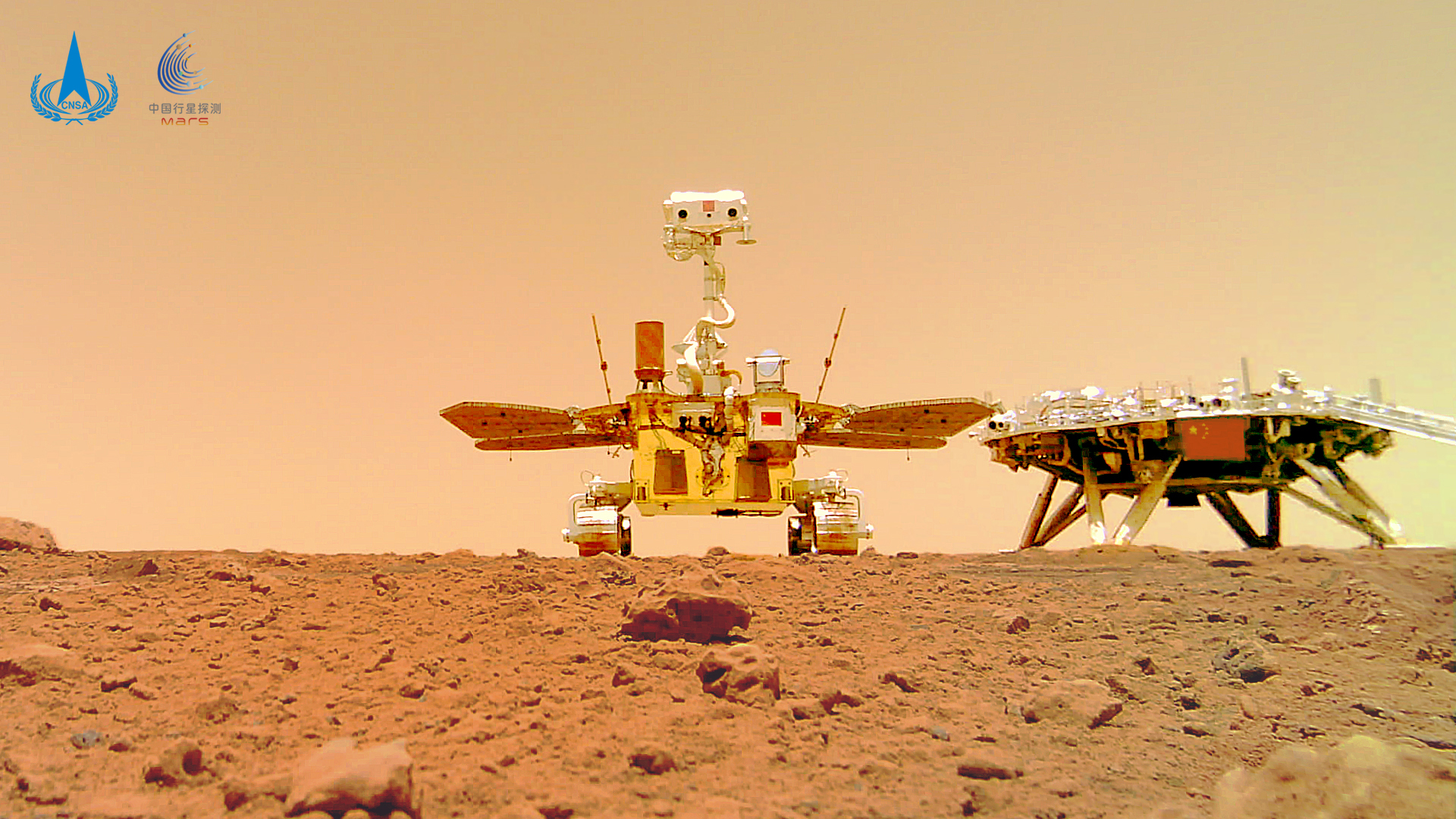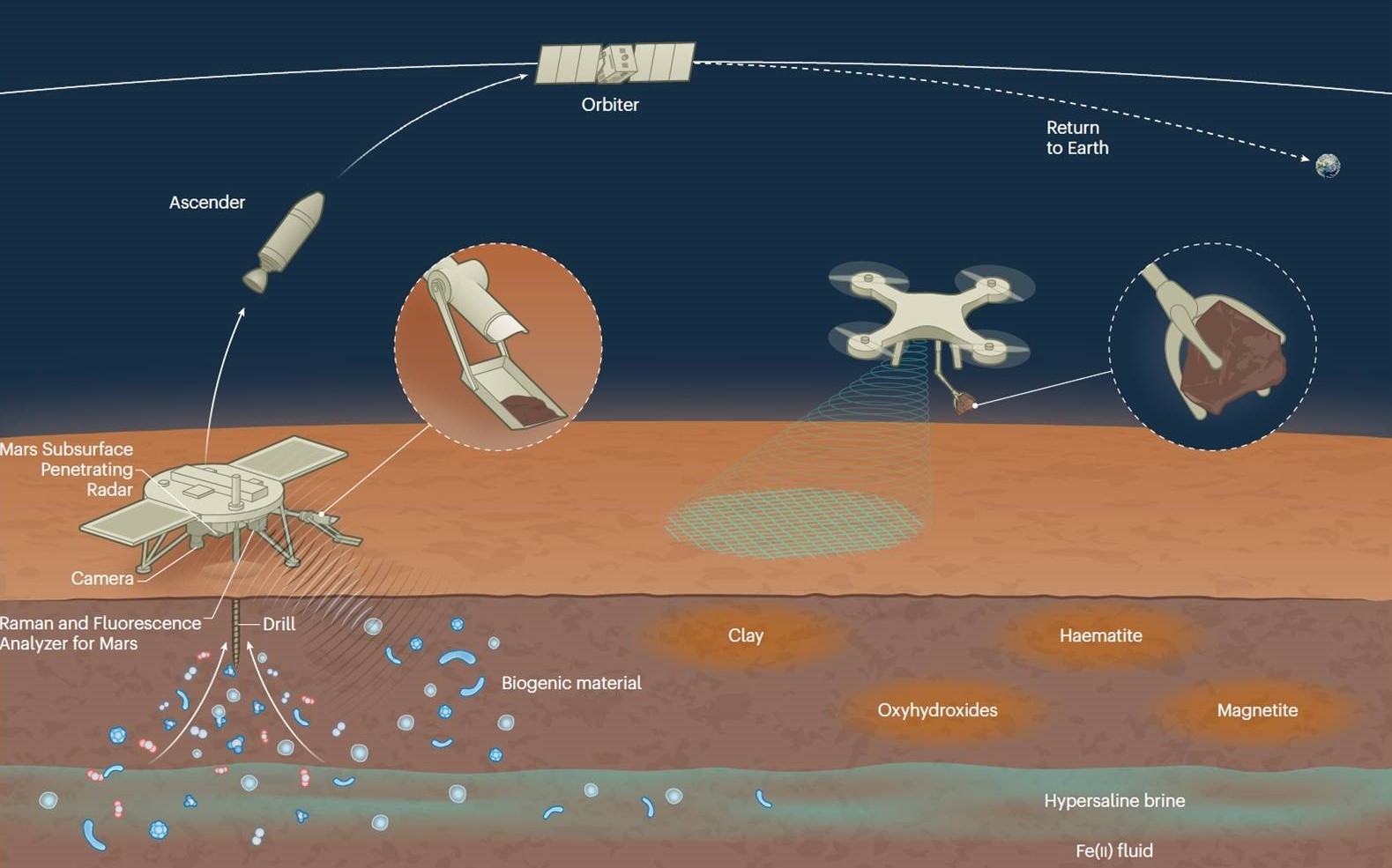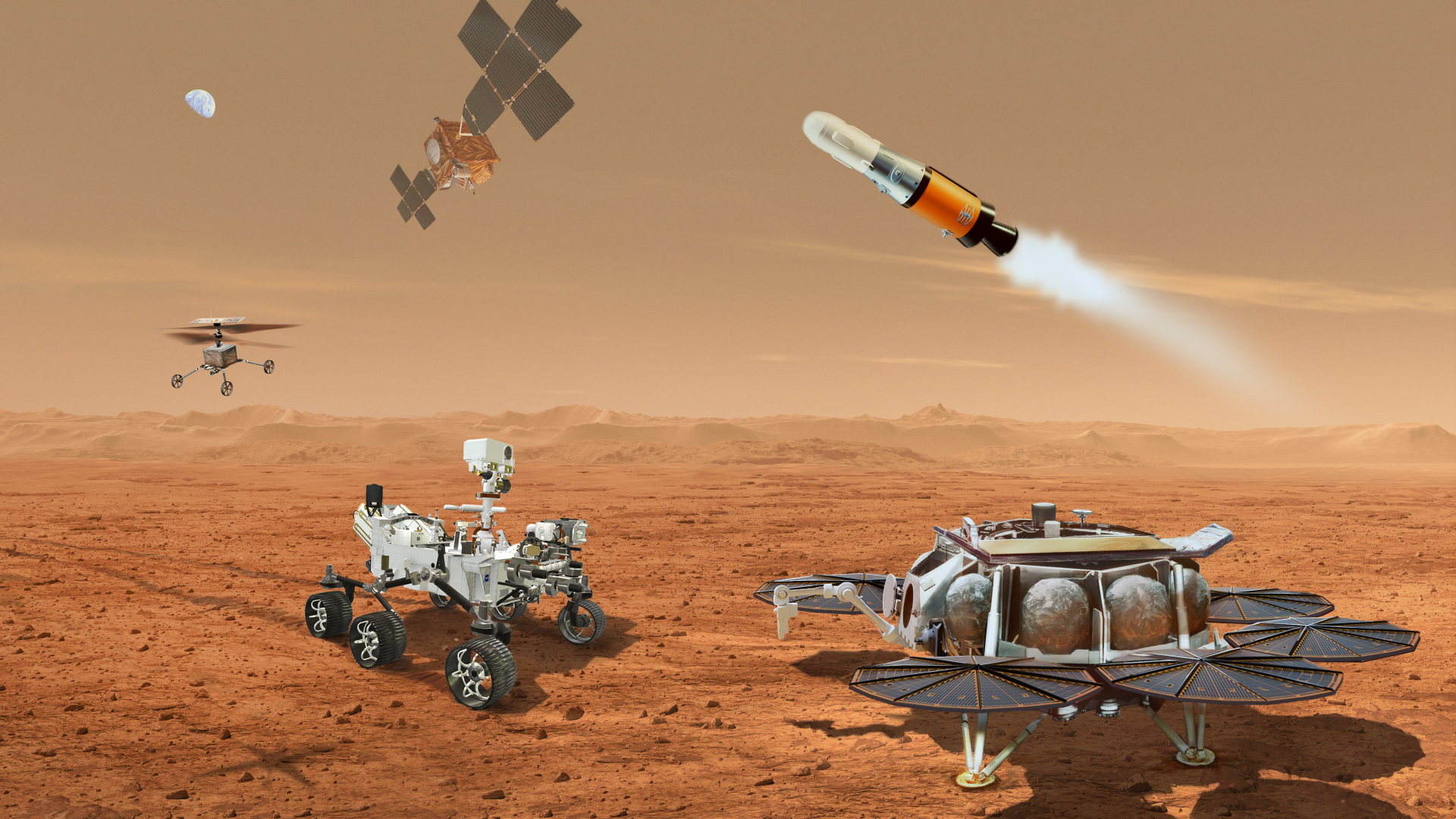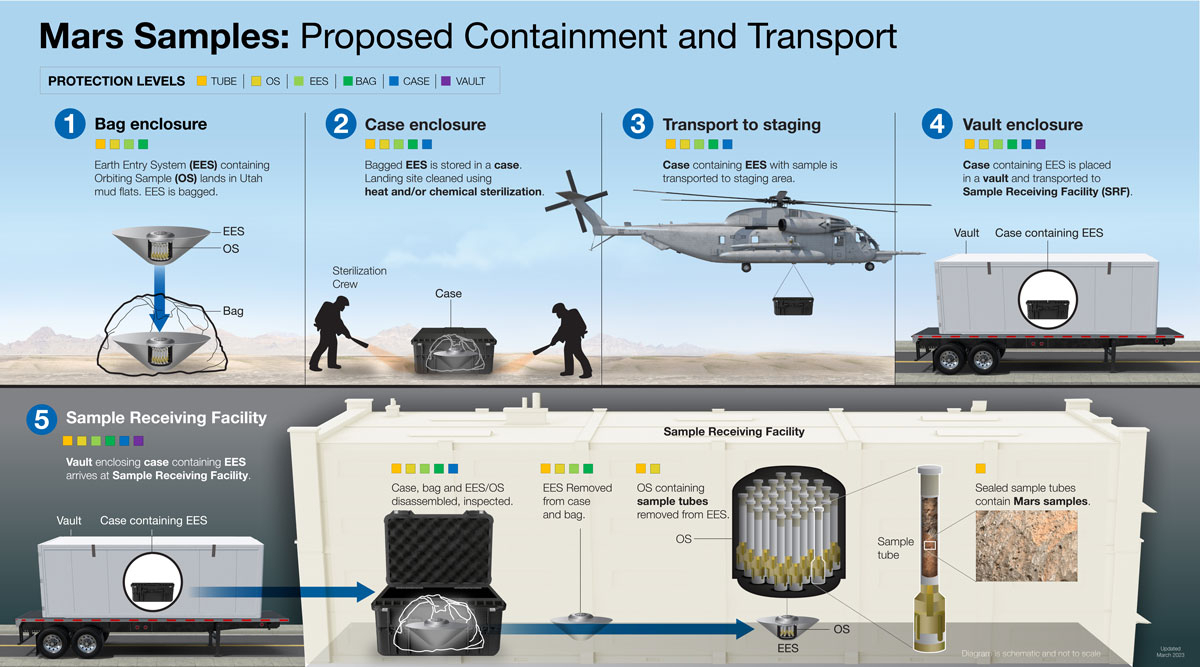China wants to return samples from Mars. Will there be any international cooperation?

International oversight would reduce risks, but could be "a politically sensitive and contentious matter."

It is a hot debate bracketed by cold hard facts: What are the best methods for handling Mars samples here on Earth?
Planetary protection is a measure to safeguard our world from any contamination that could result from bringing home any potential biological material from the Red Planet that might lurk in bits of rocks, dust and atmospheric samples. Yes, the specter of "The Andromeda Strain" still lingers, as introduced in the 1969 novel written by Michael Crichton and later turned into a techno-thriller of a movie.
Given that China is moving forward on a specialized facility for that country's Mars Sample Return (MSR) project, some experts are wondering: Should their handling and containment construction plans and ideas undergo international inspection? What about verifying China's MSR facilities and research tactics; are they up to snuff by standards promoted by NASA and other outside organizations? Could that be an approach to promote working together?
Progressing nicely
Athena Coustenis is chair of the Panel on Planetary Protection within the Committee on Space Research (COSPAR). Dedicated to promoting international scientific research in space, COSPAR is a forum open to scientists for exchanging results, information and opinions, as well as discussing problems that may affect space research.
Coustenis noted that U.S. President Trump's budget request to Congress does not support NASA's Mars Sample Return (MSR) project — a shame, she said, given it was the flagship effort for past Decadal Surveys. Those surveys are 10-year plans that outline space science missions and goals produced by the esteemed U.S. National Academies.
"I have recently been in China meeting with the China Association for Science and Technology (CAST) and their Mars sample return mission (Tianwen-3) is progressing nicely," Coustenis told Space.com.
"We have had presentations on that campaign," Coustenis said. "They have taken into account the scientific goals and engineering constraints. They have different sampling capabilities and launch scenarios. Their plan is to launch sometime in the 2028-2030 timeframe and they are tackling several technical challenges. They invite international collaboration," she said.
Breaking space news, the latest updates on rocket launches, skywatching events and more!
Coustenis noted that the European Space Agency (ESA) has been on tap to provide the Earth Return Orbiter designed to capture and transport to Earth the basketball-sized container of Red Planet samples. Those celestial collectibles would be sealed in a biocontainment system to prevent contaminating Earth with unsterilized material before being moved into an Earth entry capsule.
If indeed the White House budget request proceeds and MSR is removed from NASA's program, Coustenis said that ESA will have to explore other opportunities for their elements.
Win–win cooperation?
China is constructing a specialized MSR facility on the outskirts of Hefei, the capital of Anhui, China. Within that facility, freshly-sent samples from Mars by the Tianwen-3 mission would undergo comprehensive biochemical and pathological testing, say Chinese specialists, under strict isolation from the Earth's environment.
Zengqian Hou of the Institute of Deep Space Sciences and its Deep Space Exploration Laboratory in Hefei, China reported on their MSR endeavors in a recent paper published in the journal Nature Astronomy.
Zengqian and colleagues state that exploration of Mars is a collective endeavor for all of humanity, writing that the Tianwen-3 mission "is committed to win-win cooperation, harmonious coexistence and shared prosperity through international cooperation. It actively seeks international partnerships through various channels and at various levels for joint scientific research, landing site selection and scientific payload development and testing."
Politically sensitive unforeseen dangers
In hauling to Earth bits and pieces of Mars, what unforeseen dangers await?
That was the focus of a May 7 gathering of the Bipartisan Commission on Biodefense, titled "Astrobiodefense: Biological Threats and the Next Frontier." The commission brought together experts from NASA, academia, and industry to discuss future astrobiological threats.
The Commission defined astrobiodefense as the defense against biological threats that could result from space exploration, highlighting two goals: "prevent the contamination of extraterrestrial environments with Earth organisms," they say, and "prevent extraterrestrial or mutated terrestrial microbes from harming Earth's inhabitants."
But is it sensible to match U.S. and China MSR handling methods, perhaps under international scrutiny?
"While an international inspection would be ideal, it is a politically sensitive and contentious matter," responded John T. O'Brien, a research principal for the Bipartisan Commission on Biodefense with a background in bioengineering and emerging infectious diseases.
Inspections of even traditional biosafety level 4 (BSL-4) laboratories has been challenging, O'Brien said, due to the lack of an agreed-upon mechanism in the Biological and Toxins Weapons Convention, entered into force in March 1975.
International peer review
"For decades, member states have debated adding an inspection mechanism, but no agreement has been reached due to concerns over national security and commercial espionage," O'Brien explained.
Rather than a formal inspection, said O'Brien, "verification could be somewhat accomplished through an international peer review convened by COSPAR. However, it would have to be done with China's blessing and invitation."
Could or should that be an avenue to encourage U.S. and China MSR teams working together?
"It absolutely can and should be a collaborative approach, especially because this is less about intellectual property and state secrets surrounding biological research and more about the science and safety of the planet," O'Brien said.
No mandatory oversight
Taking part in that Astrobiodefense: Biological Threats and the Next Frontier confab was Cassie Conley, a former NASA Planetary Protection Officer.
To date, all planetary protection compliance has been voluntary and voluntarily reported, with no mandatory oversight, Conley told Space.com.
"There hasn't really ever been international enforcement, other than the opportunity to present at COSPAR meetings, along with the associated peer pressure from other space exploration agencies and entities involving implicit threat of not participating in noncompliant missions," said Conley.
In part this may have been due to diplomatic informality, Conley said, as well as "flying under the radar of space law," since it wasn't until 2017 that the United Nations General Assembly formally recognized the COSPAR policy as providing appropriate guidelines for complying with Article IX of the Outer Space Treaty.
Article IX deals, in part, with conducting exploration of celestial bodies and avoiding "their harmful contamination and also adverse changes in the environment of the Earth resulting from the introduction of extraterrestrial matter and, where necessary, shall adopt appropriate measures for this purpose."
That said, however, it isn't clear who should be doing any kind of inspections, since countries generally don't like other ones looking over their shoulders, Conley advised, "when implementing challenging activities that likely involve technological and other capabilities they'd like to keep secret, and if someone wanted to point fingers at space agencies that don't behave well."
Misplaced confidence
Conley suspects any proposal to implement international oversight of planetary protection compliance would fall on completely deaf ears.
"It's undeniable that having effective international oversight of what's called 'restricted Earth Return containment compliance' would reduce risk to the Earth," Conley said.
"But even if implementation were attempted, how likely is it that international inspectors would get an accurate view? Better to acknowledge the potential for problems clearly, than encourage misplaced confidence in things we don't actually know," concluded Conley.

Leonard David is an award-winning space journalist who has been reporting on space activities for more than 50 years. Currently writing as Space.com's Space Insider Columnist among his other projects, Leonard has authored numerous books on space exploration, Mars missions and more, with his latest being "Moon Rush: The New Space Race" published in 2019 by National Geographic. He also wrote "Mars: Our Future on the Red Planet" released in 2016 by National Geographic. Leonard has served as a correspondent for SpaceNews, Scientific American and Aerospace America for the AIAA. He has received many awards, including the first Ordway Award for Sustained Excellence in Spaceflight History in 2015 at the AAS Wernher von Braun Memorial Symposium. You can find out Leonard's latest project at his website and on Twitter.
You must confirm your public display name before commenting
Please logout and then login again, you will then be prompted to enter your display name.



